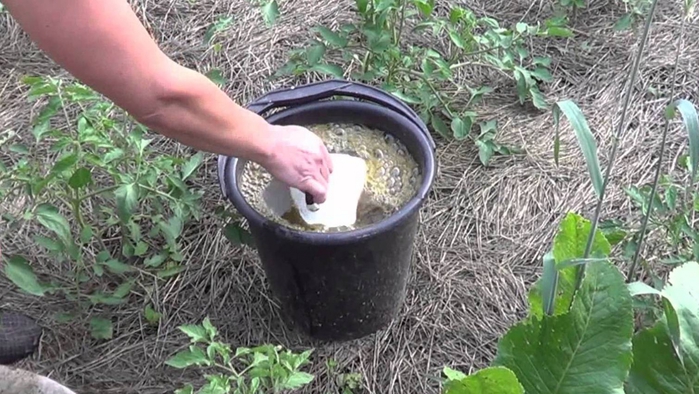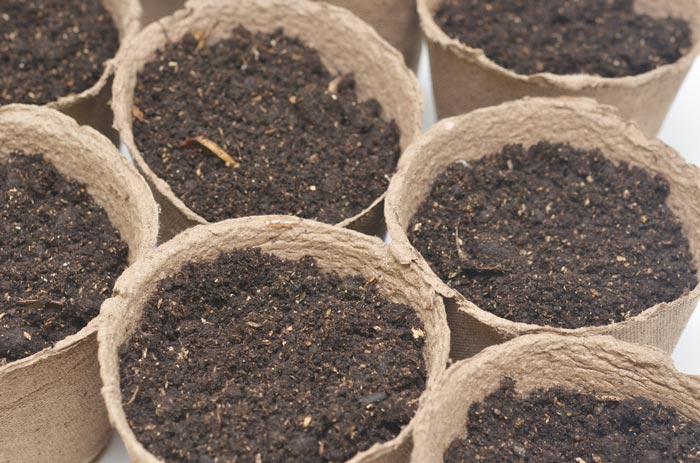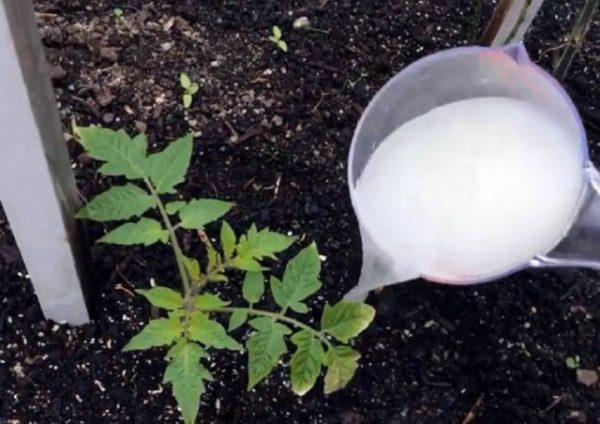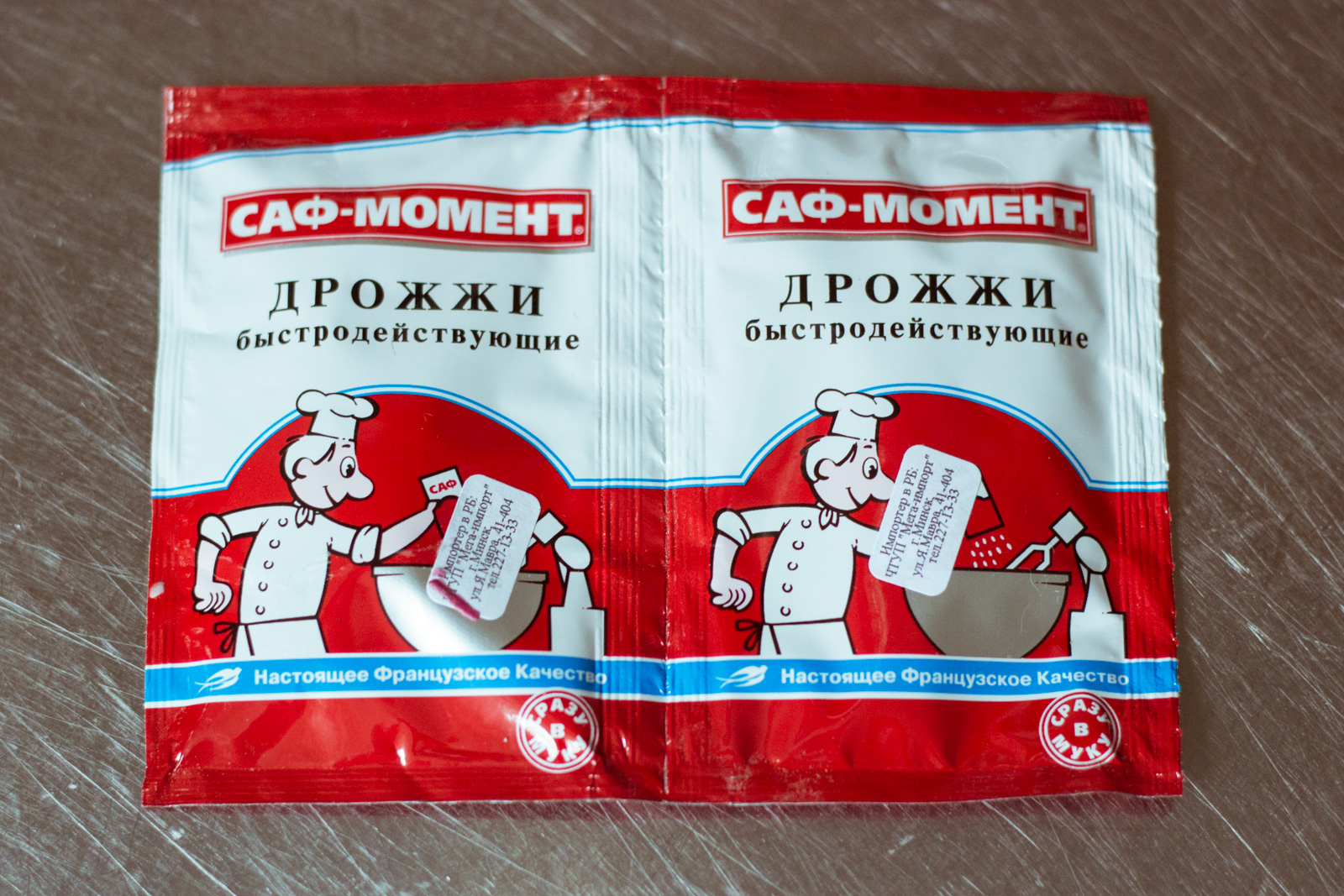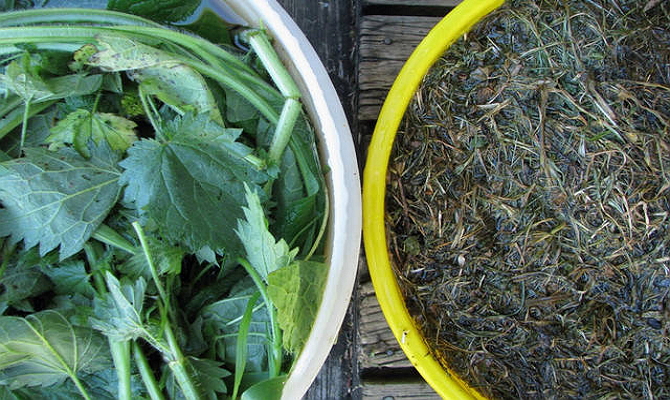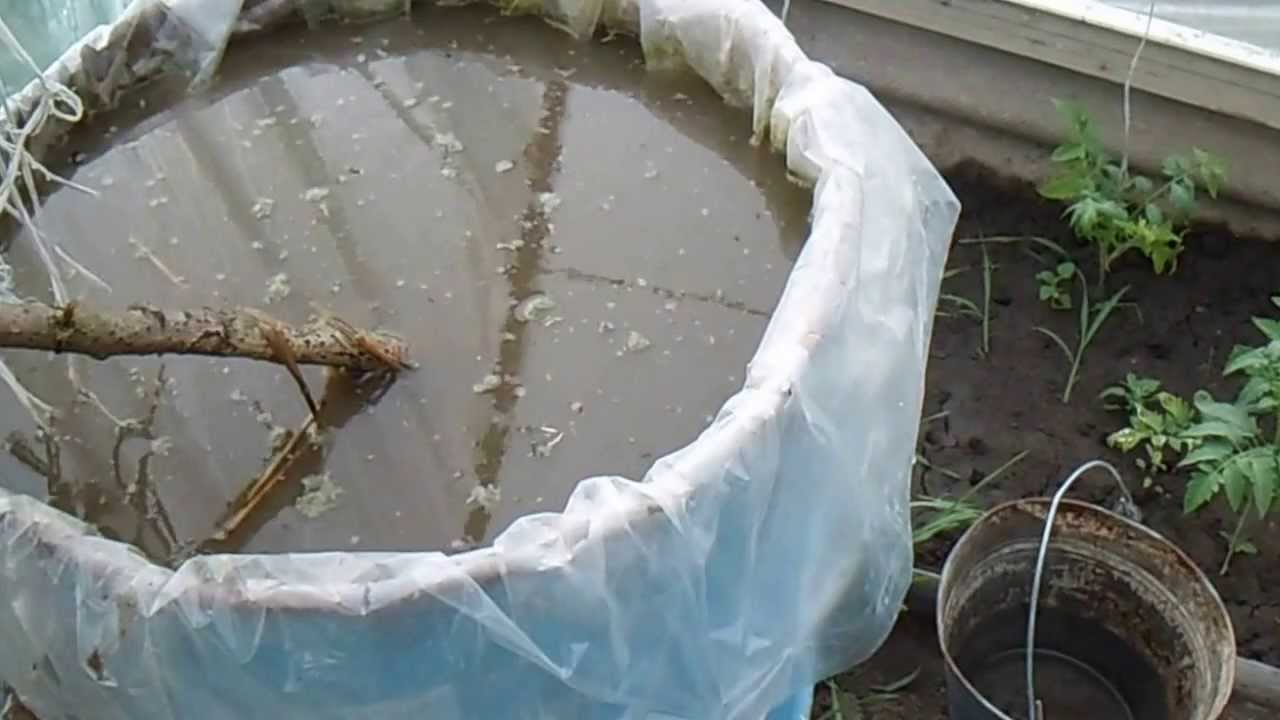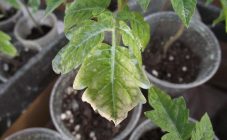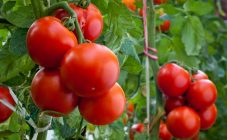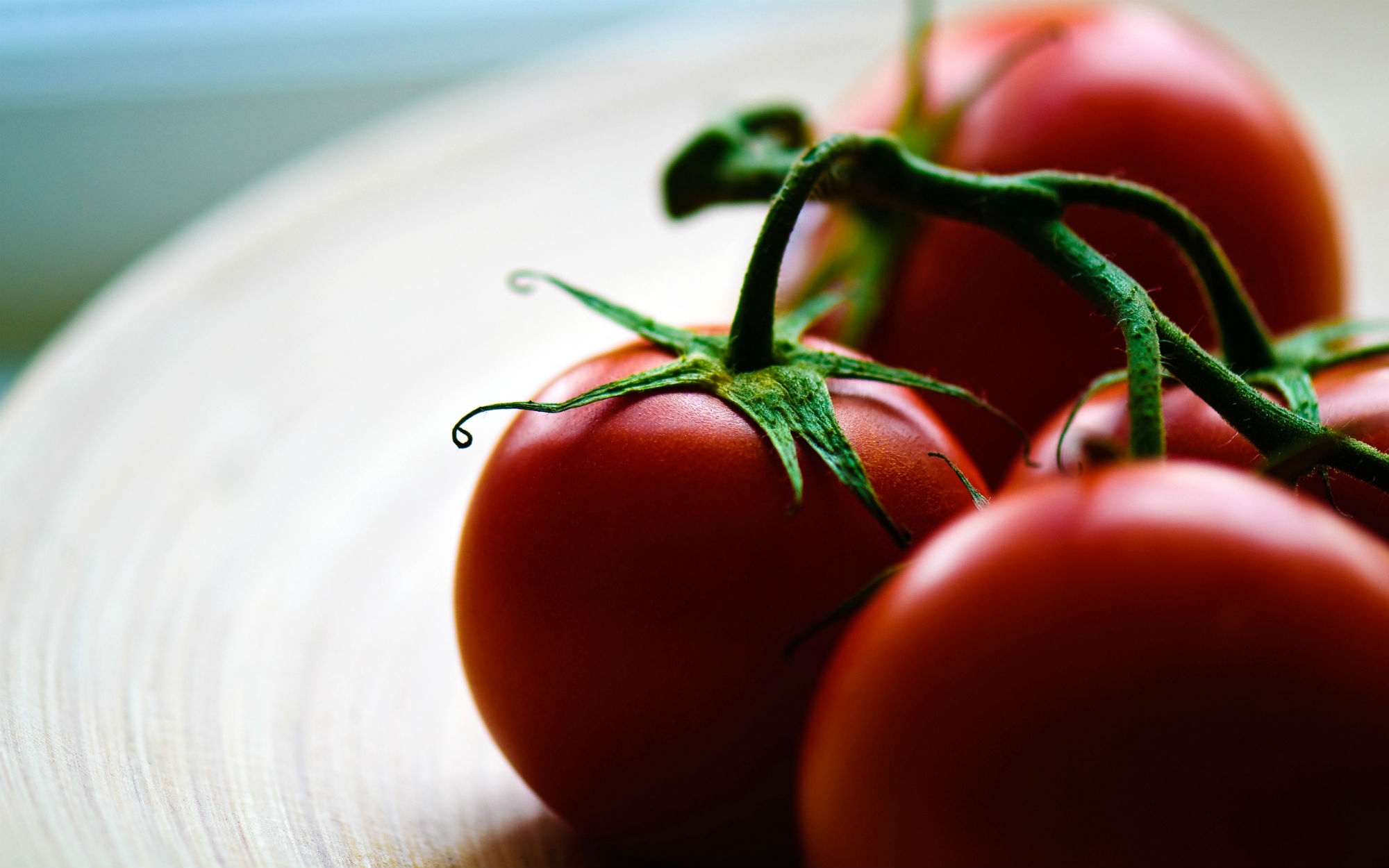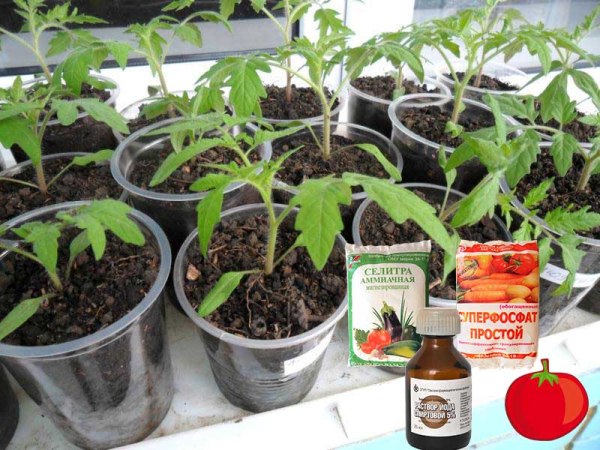Content:
The human diet is not complete without yeast-based foods:
- bakery products;
- kvass and alcohol.
This includes dietary supplements and medications. Today, however, tomato and pepper seedling yeast is a new area where it has been successfully used.
Biological characteristics
Yeast is a single-celled fungal organism that reproduces vegetatively. The lack of oxygen supply to a closed vessel increases the intensity of reproduction. Glucose serves as a catalyst in an oxygenated environment. The chemical composition of the yeast product includes:
- potassium and phosphoric acid;
- nitrogen and carbohydrates;
- amino acids.
Contains proteins and lipids. In addition, yeast can change its structure. The action of high or low temperature indicators is the root cause of yeast compositional changes.
The saturation of yeast with B vitamins determines metabolic processes not only in the human body. Yeast top dressing for tomatoes is practiced everywhere. During the experiments, it was found that unicellular microorganisms have a positive effect on the roots of tomato crops. When feeding tomato seedlings with yeast is noted at home:
- the fastest development;
- strengthening the roots;
- resistance to harmful insects and diseases;
- saturation with nutrients;
- improved fruiting.
Changes are carried out due to a qualitative change in the composition of the soil, which occurs when feeding with yeast. Once in a suitable warm microenvironment, unicellular fungi begin to multiply en masse. In addition, they actively process organic matter around the culture, leaving potash-nitrogen emissions in the soil. For the process to be successful, it is helpful to know how to feed tomatoes with yeast.
Top dressing of tomato seedlings
Growing tomato seedlings is difficult and painstaking. First, seed is planted in peat glasses or plastic containers. Then they dive, transplanting the seedlings into individual cassettes. Only a couple of months after the pick is the place for seedlings in open or protected ground. When tomato seedlings are planted in the garden bed, they need watering and feeding. This will allow you to painlessly adapt to the new environment. The planted seedlings are watered abundantly, but not flooded. The first feeding is carried out three days after the transfer of seedlings to the site. Prepared concentrates are diluted. Feeding is carried out at the root, with the exception of chicken droppings - fertilized 10 cm from the roots of tomato bushes.
Summer residents are afraid to feed with untested fertilizers so as not to ruin weakened sprouts. Gardeners can test the benefits of the tool experimentally.
For this purpose, two tomato bushes are suitable, which are located at the edge of the site. They are fed with yeast at the root. Remember the regularity of watering seedlings. The effect will exceed all expectations. Distinctive features of experimental samples:
- highly developed tomato stem;
- brightness and fleshy foliage;
- seedlings resistance to fungal infections.
Pros of yeast feeding
Feeding tomato plantings and Bulgarian yeast pepper contributes to:
- activating the growth of seedlings and growing the greenery of the planted bush;
- root development: the formation of the root system increases 5 times relative to an ordinary plant (developed roots are the guarantor of a powerful aerial part and rich fruit formation);
- strengthening the resistance of adult tomatoes (more resistant to heat and excess moisture);
- strengthening of seedlings (it is easier to adapt after diving and planting on unprotected beds).
Summer residents prepare feed from both dry and fresh yeast. For the effectiveness of the fertilizer solution, it is important to take into account the distinctive features of the culture, the ratio when preparing the mixture.
Yeast feeding contains active substances. The warmth and moisture of the soil make it possible for the active reproduction of the fungus. At the same time, potassium and nitrogen are released, which enrich the land, have a positive effect on the health of peppers and tomatoes.
In-demand recipes
Several variations of yeast solutions are popular among summer residents. Separate dressings are made with the addition of other organic components, which are useful for feeding tomato plantations:
- wheat;
- Sahara;
- hops;
- chicken droppings;
- nettles.
Often, gardeners resort to the following recipe for fertilizing tomato bushes with yeast.
Live Yeast Feeding Recipe
You will need a pack (200 g) of fresh yeast. Pre-defrost if the product was in the freezer or refrigerator. The crumbled mass is bred in a jar with a liter of lukewarm water. After the solution has been warm for 3 hours, it's time to start preparing the make-up. The freshly obtained concentrate is dissolved with a warm settled liquid in a ratio of 1:10.
Dry yeast fertilizer recipe
Two 7-gram yeast bags are mixed with a bucket of warm water. Be sure to add one third of a glass (250 g) granulated sugar. The addition of sugar promotes the fastest fermentation of the yeast. Watered only after dilution with liquid in a ratio of 1: 5.
Herbal feed recipe
To cook in a 50 liter barrel, take a bucket of cut grass:
- hops;
- nettle;
- plantain.
It is believed that hops are optimal for fertilizing tomato seedlings - they promote the formation of nitrogen. 2.5 packs of fresh mashed yeast and 1 white loaf are mixed into the mash of herbs. Tap water is poured into the mixture, which has settled, or rainfall. Leave to infuse for 2 days.
Milk recipe
Only homemade products are used. A concentrate of dry or fresh yeast (both the first and second recipes are suitable) are mixed with homemade milk, warmed to room temperature, in a ratio of 1: 5. Leave for 3 hours. Then liquid is introduced into the milk solution in a ratio of 1:10 and watered.
Recipe for feeding chicken droppings
Fertilizer is harvested using the following components and proportions:
- sugar - 1/3 cup;
- fresh yeast - half a pack;
- chicken droppings - 2 cups.
The mash ferments for 2 hours. Then water (10 l) is poured into the solution.
Top dressing bell pepper
Distinctive features of bell pepper are exactingness and whimsicality. Pepper needs calcium for proper growth. Feeding with yeast infusions will make the soil enriched with oxygen, as well as nitrogen and potassium. But when microorganisms multiply, the soil is deprived of calcium. Feeding with yeast solutions is carried out if ash or an ash mixture is introduced under the roots of pepper seedlings.
Then the seedlings are watered generously to absorb the ash into the ground.Bell pepper is usually fed on the second or third day after planting the plants in the soil. Remember to observe the proportions when dissolving ready-made concentrates. Top dressing is carried out when it is warm outside in order to accelerate the development of microorganisms in the soil. Fertilizer helps to strengthen the roots of the pepper. The introduction of the mixture is accompanied by watering with a lukewarm settled liquid.
The recommended recipes are used to fertilize peppers and tomatoes both in greenhouses and outdoors. Infusions will justify themselves very soon, causing increased growth of vegetables: the stems are strengthened and the volume of greens increases. A powerful bush of pepper will delight the owners of the dacha with a high yield.
The use of ash will help curb the growth of tops. The mineral content dilutes nitrogen and weakens its saturation. The ash of fruit trees is prized. To get ash, you only need firewood, chipboard, plywood are not recommended.
To water vegetable seedlings, you will need a glass of wood ash and a 10-liter bucket of warm water. The liquid consumption is 0.5 l per bush for cucumbers and tomatoes.
Foliar feeding of tomatoes
It is carried out if, when planting on the site, the tomatoes are sluggish, or there is no opportunity to feed at the root. Advantages:
- can be used before diving seedlings;
- direct movement of nutrients through the capillaries of foliage and stem is carried out;
- operational feeding;
- better assimilation by young seedlings;
- economical consumption of feed.
To feed the tomato bushes, a part of the required amount of yeast with a lower concentration of the solution is used. When spraying with yeast, emphasis is placed on the leaves on both sides and the stem. The optimal time for manipulation is cloudy weather, evening hours.
Other feeding methods
When feeding tomatoes with yeast, gardeners practice the use of other components:
- Ashes. A bucket of warm liquid (10 L) is mixed with yeast (100 g) and wood ash (200 g). Watering tomatoes at the stage of intensive growth, cucumbers - in the flowering phase.
- Vitamin C. It is required to mix 10 liters of water with yeast (10 g), granulated sugar (2 tablespoons), ascorbic acid (2 g) and a handful of soil. The mixture is exposed in a sunny place for the whole day, do not forget to systematically interfere. Apply a solution diluted in a 1: 5 ratio.
- Black bread. Fill a 3 liter jar with bread 2/3 of the volume, add 100 g of raw yeast and warm liquid. Leave for fermentation in a warm room for 3 days. The filtered seedling watering mixture is mixed with water in a ratio of 1:10.
- Serum and mullein. For a large garden plot, you need: nettle - 5 buckets, yeast - 2 kg, whey - 3 l, ash - 0.5 kg, mullein - 1 bucket. The tincture of the healing cocktail will take 14 days. The mixture will saturate vegetables with useful substances at the stage of fruit formation and development. Watering the seedlings is carried out once every one and a half weeks, a liter of suspension is added to the culture.
- Iodine. Seed treatment - about 6 hours with a 0.1% solution, the formation of 2 true leaves - for 3 liters of water 1 drop of iodine tincture (5%) under the roots of seedlings, tying a brush when planting in the soil - dissolve 3 drops of iodine in 10 liters of water. Pour 1 liter under the root. For the prevention of diseases, 2 drops of iodine and 100 ml of milk serum are injected into a liquid (1 l).
- Eggshell. The shell of 4 eggs is crushed to a powdery state, 3 liters of warm liquid are poured. The dishes are covered with a leaky lid and left in the dark for 3 days. The turbidity of the composition and the outgoing nasty smell (hydrogen sulfide decomposes) signal the readiness of the drug.
- A mixture of mineral fertilizers and organic matter. For 10 liters of liquid, a liter can of manure, a tablespoon of complex mineral makeup, potassium permanganate or copper sulfate (1 g) are needed. Introduce 0.5 l under the roots of tomatoes at the fruiting stage.
- Sprouted wheat.In addition to yeast, a tincture of ground sprouted wheat (1 glass), together with flour and sugar, 2 tbsp each, is suitable for feeding seedlings. l. The mixed components are poured with liquid and boiled over low heat for 20 minutes. Then the solution is left for fermentation, after 2 days, 10 liters of water are poured in and the tomato seedlings are treated.
- Zelenka. Due to the antiseptic effect, tomato wounds are treated, which appear by chance or with small cutting of tomato leaves. Tomato plantings are sprayed with a solution of brilliant green (40 drops per bucket of water), protecting against late blight.
- Ammonia. The dosage of tomato fertilizer is different and is determined by the method of use:
- for 10 liters of water a bottle of ammonia (50 ml) - for sprinkling tomatoes;
- 3 tbsp per bucket of liquid l. means - for root feeding;
- for 1 liter of water 1 tsp. drug - to feed seedlings;
- for 1 liter of liquid 1 tbsp. l. ammonia (25%) - with a nitrogen deficiency, use a concentrate in case of emergency watering.
Recommendations
Experienced summer residents are advised to adhere to the rules:
- Before making yeast feeds, it is required to water the seedlings with warm water. Yeast loves warmth. Watering unheated soil with yeast is a waste of effort and time with an ineffective result.
- Before feeding, the soil is pollinated with plant ash.
- Tomato tops are sprayed with yeast foliar feeding.
- Don't overdo it with fertilizers. They are fed a maximum of 4 times, so as not to provoke an imbalance in the soil and not to harm the tomato seedlings.
- If the weather is damp and cold, do not rush to feed yeast.
For proper cultivation of seedlings and obtaining a good harvest, it is useful to observe the condition of tomato bushes, the regularity of feeding with micro- and macronutrients, minerals and vitamins. Timely and correct fertilization of seedlings with yeast will increase productivity, as well as protect against diseases and harmful insects.
